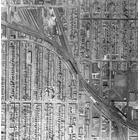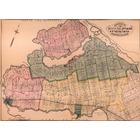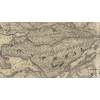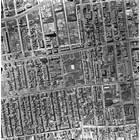Positionnement de la rue 10 sur carte historique - sélectionnnez votre adresse 📌[en]
Les rues de Montréal Ajouter une imagePar année de construction
Par nombre d'étages
10 Cartes ancienne de cette rue
Si vous avez des informations historiques ou géographiques sur cette rue, nous aimrions vous lire !
History of Tenth Avenue
Tenth Avenue runs through the Chelsea and Hell's Kitchen neighborhoods on the west side of the borough, and then as Amsterdam Avenue, through the Upper West Side, Morningside Heights, Harlem, and Washington Heights. Much of these areas were working-class or poor for much of the 20th century. The street has long been noted for its commercial traffic. The street had grade-level railroad lines through the early 20th century.[4]
The Hudson River Railroad's West Side Line ran along Tenth Avenue from its intersection with West Street to the upper city station at 34th Street, after which it veered to Eleventh Avenue; the line was completed to Peekskill, New York in 1849. Over this part of the right-of-way, the rails were laid at grade along the streets, and since by the corporation regulations locomotives were not allowed, the cars were drawn by a dummy engine, which, according to an 1851 description, consumed its own smoke. While passing through the city the train of cars was preceded by a man on horseback known as a "West Side cowboy" or "Tenth Avenue cowboy" who gave notice of its approach by blowing a horn.[5][6][7][8] However, so many accidents occurred between freight trains and other traffic that the nickname "Death Avenue" was given to both Tenth[8][9] and Eleventh Avenues.[10]
Public debate about the hazard began during the early 1900s.[11] In 1929, the city, the state, and New York Central agreed on the West Side Improvement Project,[12] conceived by Robert Moses.[13] The 13-mile (21 km) project eliminated 105 street-level railroad crossings and added 32 acres (13 ha) to Riverside Park; it also included construction of the West Side Elevated Highway. It cost more than $150 million (about $2 billion in 2017 dollars).[14]
The part of Tenth Avenue north of West 59th Street was renamed "Amsterdam Avenue" in 1890 at the request of local merchants seeking to distance themselves from "Death Avenue" and to increase the value of their properties in an area that had yet to "catch on".[15] The name was intended to recall the Dutch roots of Manhattan's earliest colonization in the 17th century, when the city was known as New Amsterdam. They hoped that the area would become a "the New City" and a "new, New Amsterdam".[16] The Board of Alderman approved the name change, but only after first considering "Holland Avenue"; the change was made just before the vote on the resolution. In their approval, the Board noted that other name changes in the area – such as that of Eleventh Avenue to "West End Avenue" – had "a marked and beneficial effect on property", and said that they held such name changes "as second in importance only to the advantages of increased rapid transit."[17]
The Fort George Amusement Park, now a seating area in Highbridge Park, was located at the northern end of Amsterdam Avenue from 1895 to 1914.[18]
Tenth Avenue and Amsterdam Avenue were converted to carry one-way traffic northbound in two stages. South of its intersection with Broadway, the avenue was converted on November 6, 1948.[19][20] The remainder, to 110th Street, was converted on December 6, 1951.[21] Amsterdam Avenue continues to carry two-way traffic north of 110th Street.
During the real estate boom of the late 20th century, Amsterdam Avenue from roughly 59th Street to 96th Street became one of the city's most expensive residential districts.
10
Thought this might interest you. Amongst some relatives things I found a small prayer book. The center spread reads like an invitation or more likely an advertisement: SIGMUND SCHEUER, Funeral Director, 1893 Amsterdam Avenue, New York City Telephone: EDgecombe 4-2743 OFFICIAL SEXTON and UNDERTAKER THE MAIMONIDES CEMETERIES. That info and more is dispersed throughout the book and on front, inside front and back covers. These folks knew how to market themselves. I came across you site while looking for info on that funeral home and cemeteries.










Ajouter un commentaire, poser une question à tous